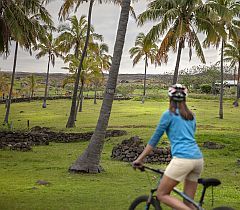First climatic refuges identified in Chilean Patagonia
A study conducted by Dr. Patricio Pliscoff and the Austral Patagonia Program from the Austral de Chile University, has identified potential climatic refuges in terrestrial and marine areas of Chilean Patagonia. These findings have relevance not only for the disciplines of ecology and biogeography, but also for the conservation of biodiversity and the subsistence of current and future species in the area. In this article, the Southern Patagonia Program fills us in on the details.
Photos by Sergio Gaete.

A recent study conducted in Chilean Patagonia has identified areas with high potential for providing biodiversity climatic refuges. These are areas that can mitigate the increasing effects of climate change and promote the survival of species, communities, and ecosystems.
“The climate emergency requires concrete and efficient measures to increase resilience in communities and ecosystems. Identifying climate refuges for biodiversity is a response to this need. That is why we have proposed the creation of a science-based data set that will help identify these areas and establish measures for their protection. Obviously, this must be complemented with local knowledge and wisdom,” said Dr. César Guala Catalán, director of the Austral Patagonia Program at the Austral de Chile University.

Through a novel methodological proposal that combines analysis of biodiversity, geodiversity and climatic variables, the study led by the geographer and doctor in Ecology, Patricio Pliscoff, identified the existence of terrestrial climatic refuges throughout Patagonia. In the Lakes Region they are concentrated in sectors such as the contiguous continental portion of Chiloé, as well as the eponymous island itself. In the Aysén Region, climatic refuges have been identified in the inland transition areas between the coast and the steppe. In the country’s most southerly Magallanes Region, they have been identified in the extreme southeastern continental areas, as well as in the northern portion of the island of Tierra del Fuego. There are a further five large marine territories that have been identified as climatic refuges in Chilean Patagonia. These are located respectively to the north of the island of Chiloé in the Los Lagos Region; in the Guaitecas archipelago in the Aysén Region, as well as in several sectors of the Magallanes Region, such as the interior channels of the Bernardo O’Higgins National Park and inside the Kawésqar National Reserve.
“The identification of climatic refuges is a key component to safeguarding biodiversity under current and future climate scenarios. In other countries, such as Australia and the United States, these refuges are a tool used to identify areas whose conservation should be prioritized. It is our hope that the same consideration will be taken in Chile,” said Pliscoff.

Once the climate refuges have been identified, the study then superimposes them over a map of Chile’s State Protected Wildlife Areas, to evaluate whether or not they are already under some form of official protection. 46 of the State Protected Areas were found to have areas with a high potential to be climatic refuges for biodiversity. The terrestrial refuges include Laguna de Los Cisnes Natural Monument, Hornopirén National Park, Futaleufú National Reserve and Lake Palena National Reserve. The marine refuges include Bernardo O’Higgins National Park, Kawesqar National Reserve, Pullinque Marine Reserve and Diego Ramírez-Paso Drake Marine Park.
“The location of climatic refuges within State Protected Wildlife Areas should be taken into account when designing their management plans,” says Pliscoff, adding that “the refuges that are outside of protected area should help inform the designation of new priority areas for conservation, and be analyzed as complements to the existing protection network”.
Another finding highlighted by the study’s author is the direct relationship between the existence of climatic refuges and primary forests, or macroalgae forests, on land or at sea respectively.

“We hope that this study will contribute to generating greater interest in the research and development of climatic refuges as a conservation tool in Chile. Although this concept has been incorporated into some public policy instruments such as the Biodiversity Strategy, the National Biodiversity Adaptation Plan and the Chilean Ministry of Environment’s Long Term Climate Strategy, its valorization and development as a tool for planning biodiversity conservation is still very embryonic”, concluded Guala.

